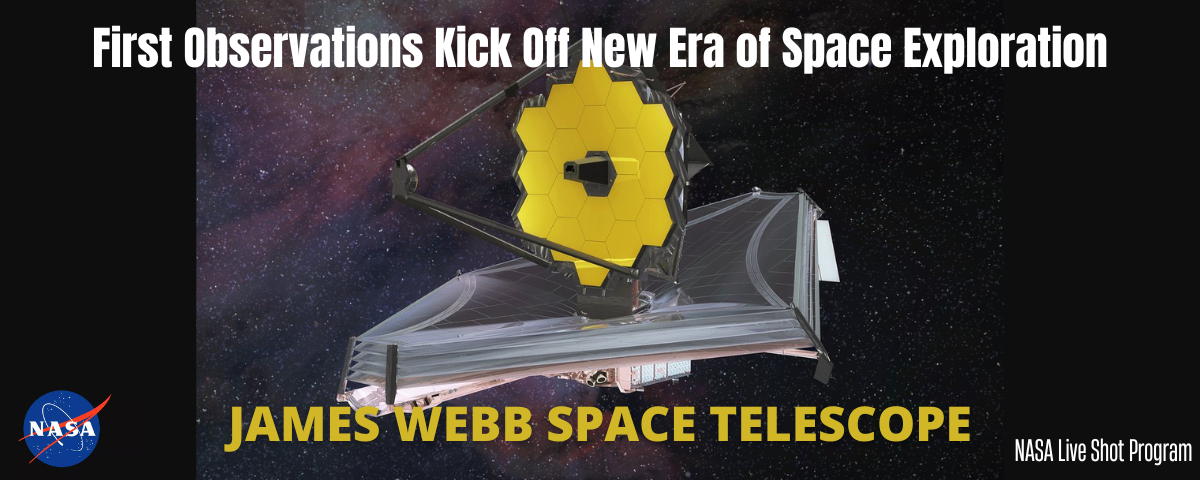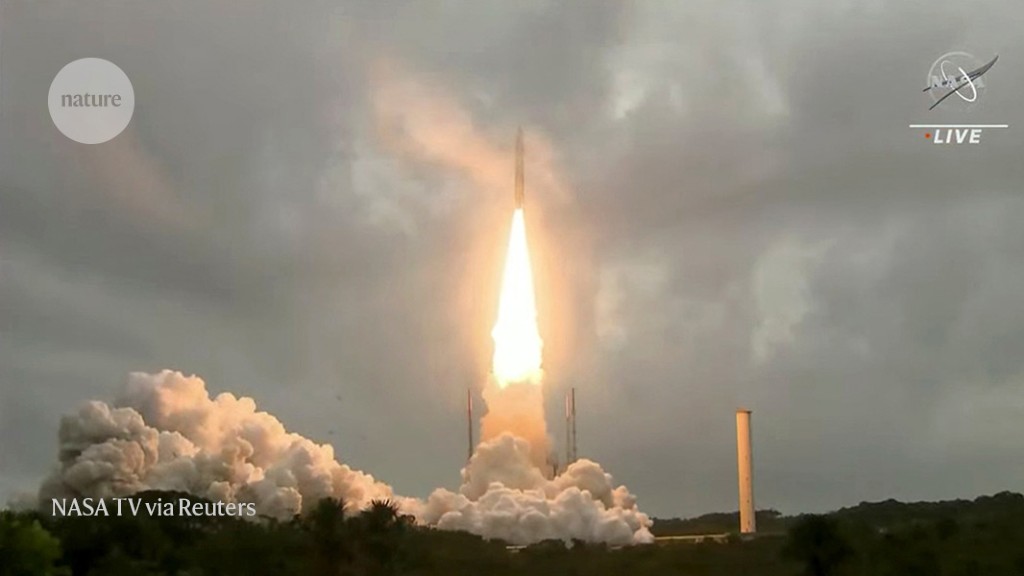The Ultimate Speedster: How Light Travels at
I. Introduction This section introduces the concept of ...
The James Webb Space Telescope (JWST) is a powerful space telescope that will enable groundbreaking discoveries in astronomy and astrophysics. The telescope is named after James E. Webb, the NASA administrator who played a key role in the Apollo program. The JWST will be the successor to the Hubble Space Telescope, and it is scheduled to launch in October 2018.
The JWST has a primary mirror that is nearly seven times larger than the mirror on the Hubble Space Telescope. This will allow the JWST to collect more light and enable it to observe distant objects in great detail. The telescope will also have a spectrograph that can split the light from these objects into its component colors. This will provide information about the chemical composition of the objects and help astronomers to better understand their formation and evolution.
The JWST will be launched into an orbit around the Sun, where it will be positioned at a point known as Lagrange point 2. This location will allow the telescope to observe the universe without being hindered by the bright light of the Sun.
The James Webb Space Telescope is an international project involving NASA, the European Space Agency, and the Canadian Space Agency. The telescope is being built by Northrop Grumman and its subcontractors.
Once operational, the JWST will be controlled by the Space Telescope Science Institute, which is also responsible for the Hubble Space Telescope. The institute is located in Baltimore, Maryland, USA.
The James Webb Space Telescope is an exciting new development in space exploration that will allow us to study the universe in unprecedented detail.

The James Webb Telescope (JWST) is a marvel of engineering and promises to revolutionize our understanding of the universe. With its massive 6.5-meter mirror, JWST will be able to see further and in greater detail than any other telescope in history. With its unprecedented level of sensitivity, JWST will be able to detect the faintest light sources in the universe, including the first glimpses of the earliest stars and galaxies.
JWST is scheduled for launch in October of 2018, and when it does, it will usher in a new era of space exploration. With its powerful capabilities, JWST will allow us to explore the farthest reaches of the cosmos, and to learn more about the origins and evolution of our universe.
When the James Webb Telescope is launched in 2021, it will be the most powerful space telescope ever built. With its unprecedented ability to see distant objects in infrared light, the Webb Telescope will allow astronomers to peer back in time to the early universe and study the formation of galaxies. It will also be able to study exoplanets, or planets beyond our own solar system, in greater detail than ever before.
The James Webb Telescope is a joint project of NASA, the European Space Agency, and the Canadian Space Agency. It is named after James E. Webb, who served as NASA’s second administrator from 1961 to 1968.
The Webb Telescope is designed to be much larger and more powerful than the Hubble Space Telescope, which was launched in 1990. The Webb Telescope will have a primary mirror that is 6.5 meters (21 feet) in diameter, making it more than twice as large as the Hubble’s 2.4-meter (8-foot) mirror. The larger mirror will allow the Webb Telescope to collect more light, which will enable it to see objects that are much fainter and more distant than those that Hubble can observe.
In addition to its large mirror, the Webb Telescope will also have a highly sensitive infrared camera and spectrograph. These instruments will allow the telescope to detect infrared light from very distant and faint objects.
The Webb Telescope is being built by Northrop Grumman and is scheduled to be launched in October 2021 aboard an Ariane 5 rocket from Kourou, French Guiana.
The James Webb Space Telescope (JWST) is NASA’s next great observatory, and it will herald a new era of space science. JWST is scheduled to launch in 2021, and it will be the most powerful space telescope ever built. JWST will be able to see farther and deeper into space than any telescope ever before, and it will enable scientists to study some of the most distant and mysterious objects in the universe.
JWST is a successor to the Hubble Space Telescope, and it will build on the groundbreaking discoveries that Hubble has made. Hubble has allowed us to see some of the most distant objects in the universe, and it has revealed the astonishing beauty of the cosmos. JWST will take Hubble’s discoveries to the next level, and it will allow us to explore the universe in greater detail than ever before.
JWST will be able to study objects that are too distant for Hubble to see, and it
The James Webb Telescope: A New Era of Space Observation The James Webb telescope is set to launch in 2021 and will be the largest and most powerful telescope ever sent into space. With its unprecedented ability to observe distant objects in near-infrared light, the Webb telescope will allow astronomers to peer back in time to the earliest galaxies that formed after the Big Bang. It will also provide new insights into the formation of stars and planets, and the search for life beyond our solar system. The Webb telescope is a joint project between NASA, the European Space Agency, and the Canadian Space Agency.

The James Webb telescope will be a large infrared telescope that will orbit the sun. It will be the successor to the Hubble telescope and will be much more powerful. The telescope is scheduled for launch in 2021.
The Webb telescope will be able to see much more distant objects than the Hubble telescope. It will be able to see objects that are 13.5 billion light-years away. This is because the Webb telescope will have a larger mirror than the Hubble telescope. The Hubble telescope’s mirror is 2.4 meters in diameter, while the Webb telescope’s mirror will be 6.5 meters in diameter.
The Webb telescope will also be able to see more detail in the objects that it observes. This is because it will have a much larger field of view than the Hubble telescope. The Webb telescope’s field of view will be about 100 times larger than the Hubble telescope’s field of view.
The Webb telescope will be able to
The James Webb Telescope is set to launch in 2021 and promises to be a game-changer for space research. With its unprecedented power and sensitivity, the Webb Telescope will allow astronomers to see further and clearer into space than ever before.
The Webb Telescope is the successor to the Hubble Space Telescope, and was designed to address some of the limitations of its predecessor. Unlike the Hubble, which is limited by its position in low Earth orbit, the Webb Telescope will be positioned at the Lagrange Point 2, more than one million miles from Earth. This will give it a much clearer view of the universe, free from the interference of Earth’s atmosphere.
In addition, the Webb Telescope will be equipped with a number of powerful scientific instruments, including a near-infrared camera, a near-infrared spectrograph, and a mid-infrared instrument. These will allow astronomers to study everything from the formation of galaxies to the atmospheres of exoplanets.
The launch of the James Webb Telescope will mark a new era in space research, and promises to provide insights into some of the most intriguing mysteries of the universe.

The James Webb Telescope (JWST) is a large, next-generation space observatory under construction by NASA. It will be the most powerful space telescope ever built, and will serve as a major step in the agency’s efforts to explore the origins of the universe.
The JWST is scheduled for launch in October of 2018. It will be positioned 1.5 million kilometers from Earth, where it will be able to observe the universe in infrared light. The telescope will have a 6.5-meter mirror, which will give it greater resolution and sensitivity than any previous space telescope.
The JWST will be used to study the formation of galaxies, the evolution of stars, and the origins of the universe. It will also be used to study planets around other stars, and to search for signs of life in the universe.
The JWST is a vital part of NASA’s next-generation space exploration program, which includes
You cannot copy content of this page